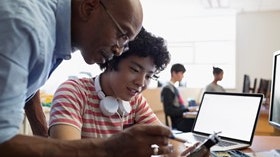Homepage
•
Learning Library
•
Blog
•
4 ways to help students get workforce-ready
Expand breadcrumbs
Expand breadcrumbs
- Learning Library
- Blog
- 4 ways to help students get workforce-ready
- Homepage
- •
- Learning Library
- •
- Blog
- •
- 4 ways to help students get workforce-ready
4 ways to help students get workforce-ready
By Jennifer Snelling
January 10, 2018








